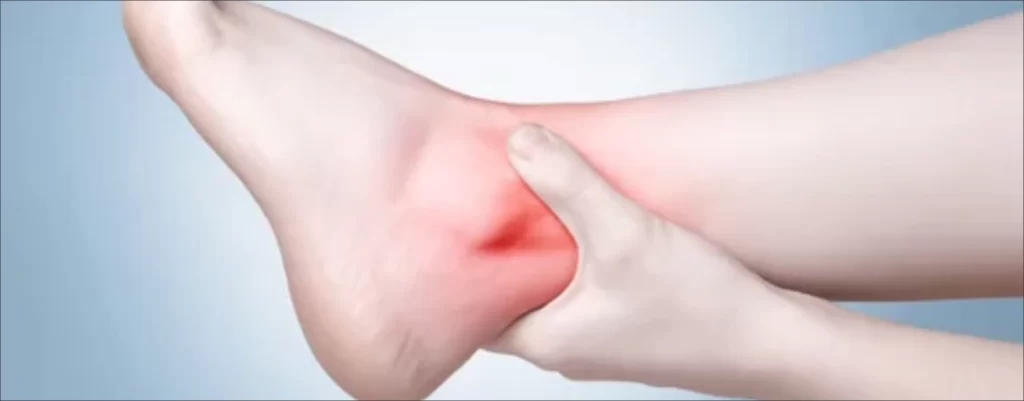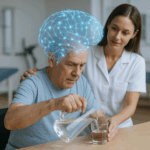ANKLE JOINT PAIN: A DETAILED OVERVIEW
Ankle joint pain is a common condition that affects individuals of all ages and can limit daily activities. Pain in the ankle joint can be caused by various factors, including overuse, injury, and degenerative conditions. Understanding the anatomy, biomechanics, and causes of ankle joint pain can help individuals take steps to prevent it and find effective treatment options.
ANATOMY OF THE ANKLE JOINT
The ankle joint is formed by the meeting of the tibia and fibula bones in the lower leg with the talus bone in the foot. The bones are held together by strong ligaments that provide stability to the joint. The joint is surrounded by a fibrous capsule and lubricated by synovial fluid, which helps to reduce friction during movement.
BIOMECHANICS OF THE ANKLE JOINT
The ankle joint is responsible for several important movements, including dorsiflexion (lifting the foot upward), plantarflexion (pointing the foot downward), inversion (turning the foot inward), and eversion (turning the foot outward). The joint also absorbs shock during activities such as walking, running, and jumping. The biomechanics of the ankle joint are influenced by several factors, including the muscles and tendons surrounding the joint, the alignment of the bones, and the condition of the soft tissues.
CAUSES OF ANKLE JOINT PAIN
Ankle joint pain can be caused by a variety of factors, including:
Overuse: Repetitive stress on the ankle joint can cause inflammation and pain.
Injury: Sprains, strains, fractures, and dislocations can all cause pain in the ankle joint.
Degenerative conditions: Osteoarthritis and other degenerative conditions can cause pain and decreased mobility in the ankle joint.
Inflammatory conditions: Rheumatoid arthritis and other inflammatory conditions can cause pain and swelling in the ankle joint.
PREVENTION TIPS FOR ANKLE JOINT PAIN
There are several steps individuals can take to prevent ankle joint pain, including:
Wearing appropriate footwear: Wearing shoes that provide adequate support and cushioning can help reduce stress on the ankle joint.
Stretching: Stretching the muscles and tendons surrounding the ankle joint can help improve flexibility and reduce the risk of injury.
Strengthening: Strengthening the muscles surrounding the ankle joint can improve stability and reduce the risk of pain and injury.
Avoiding high-impact activities: Engaging in high-impact activities such as running and jumping can put extra stress on the ankle joint.
Maintaining a healthy weight: Excess weight can increase stress on the ankle joint and contribute to pain and degenerative conditions.
TREATMENT FOR ANKLE JOINT PAIN
Treatment for ankle joint pain will vary depending on the underlying cause of the pain. However, several treatment options are commonly used, including:
Physiotherapy and Manual Therapy: Physiotherapy and manual therapy can help to improve flexibility, reduce pain, and promote healing.
Myofascial Releases: Myofascial releases can help to reduce tension in the muscles surrounding the ankle joint and improve mobility.
Muscle Energy Technique: Muscle energy technique is a manual therapy technique that involves the active contraction and relaxation of muscles to improve mobility and reduce pain.
Proprioceptive Exercises: Proprioceptive exercises can help to improve balance and stability, reducing the risk of injury and pain in the ankle joint.
Strengthening Exercises: Strengthening exercises can help to improve the stability and function of the ankle joint, reducing the risk of pain and injury.
Laser Therapy: Laser therapy involves the use of low-level laser light to reduce pain and promote healing in the ankle joint.
Electromodalities: Electromodalities, such as transcutaneous electrical nerve stimulation (TENS) and electrical stimulation, can help to reduce pain and promote healing in the ankle joint.
In conclusion, ankle joint pain is a common condition that can limit daily activities and impact quality of life. Understanding the anatomy, biomechanics, causes, and prevention tips of ankle joint pain can help individuals take steps to prevent it and find effective treatment options. Treatment options for ankle joint pain can include physiotherapy, manual therapy, myofascial releases, muscle energy technique, proprioceptive exercises, strengthening exercises, laser therapy, and electromodalities. If you are experiencing ankle joint pain, it is important to seek the advice of a medical professional to determine the best course of treatment for your individual needs.






